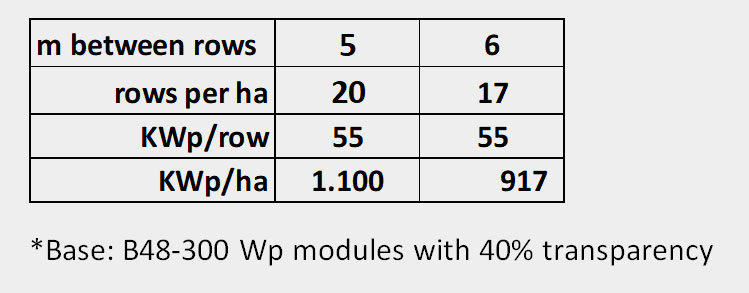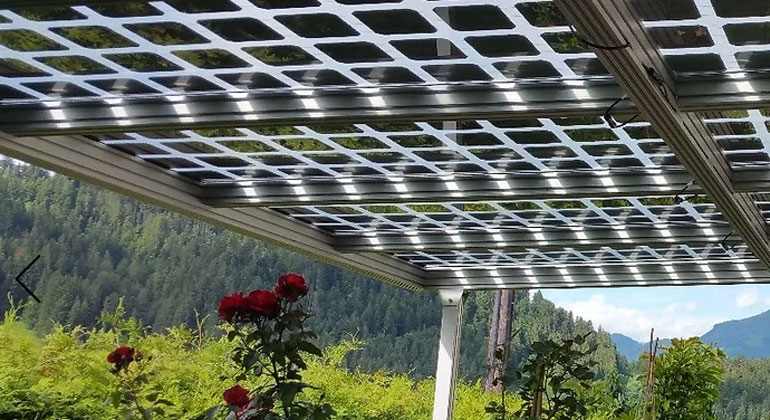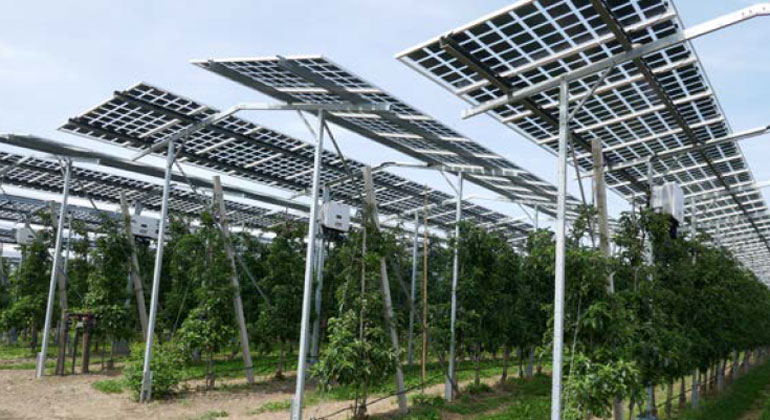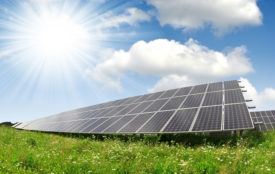Newly developed AgriPV systems deliver high double yields at costs in the range of ground-mounted PV systems
The benefits of AgriPV systems have been discussed for a long time. Against the background of the current energy discussions, there is now a surprisingly large consensus on the high benefit of these PV systems.
Studies conducted by Fraunhofer ISE, for example, show that 5-8 times the electricity demand (1,700 – 2,000 GW) forecast for the energy transition in 2040 (300-450 GW) can be generated on agricultural land in Germany.
It was mainly due to the comparatively high costs that only a few pilot projects with high subsidies have been realized so far. This has now changed. With comparable costs of a ground-mounted system, GridParity AG now offers prices of 1,000 – 1,200 €/KWp. These are only marginally higher than those of ground-mounted systems. And also in terms of electricity yields per hectare, AgriPV systems are approaching those of other installations. This will be proven with figures in the following.
AgriPV Fence
These systems are characterized by rows of vertically elevated bifacial double-glazed PV modules. In order to achieve a high yield from both sides, shading at all times of the day (with different angles of solar radiation) must be avoided. Therefore, only frameless bifacial modules with a high output can be considered.
The yield per hectare (ha) also depends on the spacing of the rows, as shown in the following table:

*Base: B472/6-450 Wp modules.
Row spacing is determined by agricultural use.
If harvesting machines are to be used, then a large distance of approx. 12 m should be selected. In this case, only about 500 kWp per hectare can be installed at present.
However, if a different use or even pasture management, e.g. with sheep, is intended, then systems of up to one megawatt per hectare can be installed, i.e. almost the same output as on a free-field power plant.
AgriPV for fruit and horticulture
In this application, the spacing is essentially determined by the type of fruit grown, and the division into two groups has proven effective in practice:
Lower elevations for berry crops or horticulture and higher elevations for tree crops such as pome or stone fruit crops.
For both types of installation, row spacing is 5-6 m, resulting in the high connected loads per hectare (ha) shown in the table below.

*Base: B48-300 Wp modules with 40% transparency
Double yield and additional benefits

The use of bifacial modules even results in additional yields of 10-15%.
A system above a pome fruit orchard (e.g. apple trees) yields about 1150 kWh/KWp in the Lake Constance area and over 1200 kWh/KWp in South Tyrol.
In almost all applications of the AgriPV economy there are sometimes considerable additional benefits which can vary greatly from region to region.
In the southern parts of Europe, e.g. in southern Italy and Sicily, only the protection from the strong solar radiation makes it possible to cultivate large areas of land again at all. Climate change there is leading to extremely high temperatures and extreme water scarcity. Here, AgriPV enables a slow reversal of the processes: the protection from extreme solar radiation protects the plants and the electricity generated can be used to operate pumps for irrigation and other electrical consumers. In irrigation, for example, water is distributed very efficiently exclusively directly to the plants. The so-called “drip irrigation”, is the most economical of all types of irrigation with an efficiency of up to 95%. The normally high installation costs can be saved, as the hoses required for this can be attached directly to the AgriPV racks. Only small amounts of water are delivered via the small outlets specially attached for the plant species, which can also be enriched with nutrients if necessary.
The systems provide protection against extreme weather events such as heavy rain and hail. Especially in fruit growing, a considerable part of the harvest is often destroyed by hail or the marketing is impaired. The expensive hail nets are saved. The use of sprays can also be reduced by up to 80%, as they no longer have to be washed off by the rain and constantly renewed.
The advantages of AgriPV use are matched by only a few disadvantages. These relate to the fact that not all plants or crops can cope with the reduced light intensity, resulting in reduced yields in some cases. Agricultural universities worldwide have already developed catalogs of which plants may be affected in which regions of the world. In breeding stations, plants have already been specifically selected for their growth characteristics under lower light levels.
AgriPV Fence systems, in turn, require adjustments to processes for sowing and harvesting.
Given the constraints of ongoing climate change on food production and the immense increase in demand for electricity to reduce the use of fossil fuels such as gas, the increased use of AgriPV represents a major opportunity.








